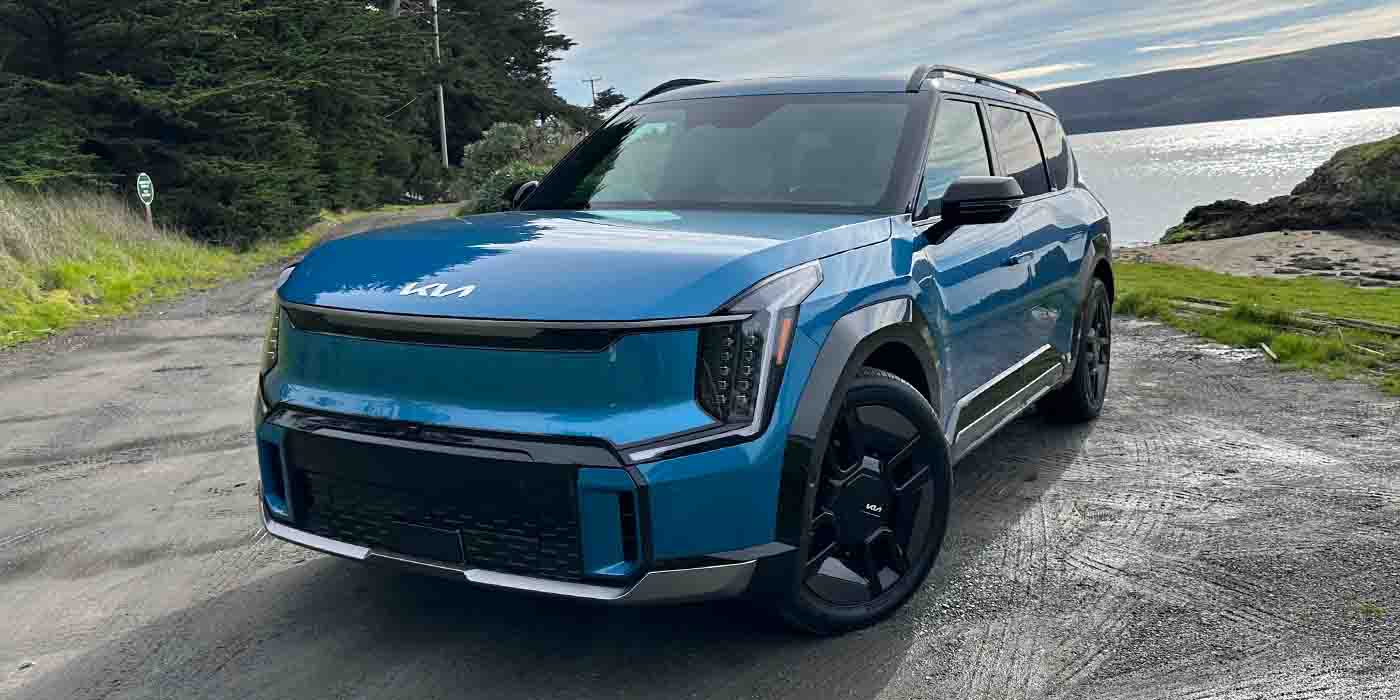
Three months after opening US orders for the long-anticipated three-row EV9 SUV, the folks at Kia invited media out to wine country to test drive it for the first time. We’ve already had up-close encounters with the EV9, but this was our first chance to take it for a spin and really test everything inside and out (including that third row). While you probably can’t put bodybuilders in the back seat, the EV9 delivers in a lot of ways other OEMs are not and at a relatively enticing price point.
Table of contents
A quick Kia EV9 recap leading up to the test drive
This latest drive event (personally my first with Kia) was three years in the making, as the EV9 SUV’s origin dates back to its debut as a concept at the LA Auto Show in 2021. I was present at that unveiling and felt early on that if Kia and Hyundai Motor Group could deliver an EV that looked similar, offered maximum interior space, and had above-average range; it would be a home run with consumers… as long as the price was right too.
As always, that’s easier said than done… especially words coming from the comfort of my standing desk or, in this case, a not-so-roomy United Airlines seat. Nevertheless, we at Electrek (myself included) were pleasantly surprised at how similar the production-intent EV9 stayed to its conceptual design.
2023 was a huge year for Kia in a lot of ways, but EV9’s development was a huge part of that narrative, even if it wasn’t a genuine contributor to its record US sales (yet). We watched the EV endure winter testing, begin deliveries in its native Korea, and soon learned EU pricing.
By last summer, we learned the Korean automaker was expanding its US facility to include EV9 production – Kia’s first BEV to be built in America and eventually qualifying for (some) federal tax credits (more on that later).
From the onset of reservations, demand has far outweighed availability – an encouraging sign for the automaker that has anticipated great success with its first bespoke SUV on the E-GMP platform.
Kia turned some heads in September when it shared that the EV9 would start at an MSRP below $55,000 in the US, further teasing my appetite to test drive this model and see if it delivers on comfort and performance.
While this was easily the latest media test drive event I’ve personally experienced (EV9’s have already been delivered to some of my non-media friends), it was my best opportunity nonetheless to open up the top-tier GT-Line around wine country, and I took full advantage.
Here are my thoughts.
The Kia EV9 is premium, not luxury, roomy but not spacious
The EV9 arrives as part of Kia’s “Plan S” electrification strategy, which will introduce seven new BEV models by 2027.
The design and engineering team developed the SUV as a mainstream competitor to upcoming vehicles like the Hyundai IONIQ 7, Chevy Blazer EV, and Toyota’s bZ4X, but also put a lot of work into the interior and overall driver experience to try and compete against more luxury EV models like the Tesla Model Y and Model X, Audi Q8 e-tron, BMW iX, and Rivian R1S – all of which were benchmarked.
After driving all of these EVs and now the EV, Kia’s EV wins or at least remains competitive in a lot of categories, especially its third row. That being said, the third row may very well still underwhelm some consumers. They’ve definitely got Tesla beat though!
To give you an idea of what I was working with, I’ll detail the specs of the EV9 GT-Line – the fully-loaded SUV option from Kia that each of us media got to drive in Napa, California. Its dual-motor AWD powertrain delivers 379 horsepower and 516 lb-ft of torque. The HMG E-GMP platform features Kia’s larger 99.9 kWh lithium-ion battery pack, which weighs nearly 1,250 pounds by itself.
The GT-Line can deliver a top speed of 124 mph and accelerate 0-60 mph in five seconds – 4.5 if you use “Boost Mode” (available as an add-on for the lower trims). Since interior space has been a huge selling point on this EV from day one, I’ll also share some of the interior dimensions:
- Wheelbase: 122 inches (7.8 inches longer than the Kia Telluride)
- Headroom (dual sunroof on GT-Line):
- Front Row: 39.6 inches
- Second Row: 38.8 inches
- Third Row: 39.5 inches
- Legroom (with second row captains chairs):
- Front Row: 41.4 inches
- Second Row: 42.8 inches
- Third Row: 32 inches
That’s quite a drop-off in roominess to the third row, but I’ll admit, the EV9 delivered much more room than most third rows I’ve ever experienced, especially in EVs. For added perspective, Kia shared that the EV9 offers more total legroom than the Audi Q8 e-tron, the BMW iX, Cadillac Lyriq, and Tesla Model Y, and more third-row headroom (+0.9″) and shoulder room (+3.9″) than the Rivian R1S. Notice no mention of more legroom, though. Here are some images from the third row:
I know I’m putting a lot of emphasis on the third-row, but that’s a huge selling point used by Kia to get US consumers to want to drive the EV9. That said, let’s focus on my actual drive and my honest opinion of the Kia EV9. Here are some more images of the overall interior. Quality without flashiness and soooo many USB-C ports throughout.
EV9 could be the quietest EV I’ve ever driven
I’m leading with this because it’s a feature that is often overlooked or undervalued because you’re either blasting Pop2K on Sirius XM and not paying attention, or your driving a rattly Model Y and you’re praying for solace.
Before the drive, Kia executives told us the EV9 was quiet – a 58.2-decibel interior at 55 mph (comparable to a Range Rover interior). This is something you don’t truly appreciate until you experience it yourself, though. Between the electric motor, quiet sealed interior cabin, and noise-canceling EV tires, the EV9 was eerily quiet, even at high speeds.
I found the overall feel of the drive very smooth and acceleration with the dual motors to be adequate for confidently overtaking other vehicles on the highway. Still, we were a long way from goosebumps in terms of pure speed. And that’s fine. This EV isn’t trying to be a track car but more of a comfortable, polished, and tech-forward family vehicle, which it accomplishes tenfold.
The user interface was intuitive and easy to learn. The paddles on the back of the wheel were easy for switching between regen modes – you know I love my i-Pedal driving, so that’s where I stayed most of my drive. Still, I love that Kia offers several levels of regenerative braking for the new EV9 drivers as they get more comfortable with the nuances of one-pedal EV driving. Once you learn it, you don’t want to go back!
I initially had trouble finding how to switch drive modes until a tech pointed out it was right under my nose at the bottom of the steering wheel. I didn’t notice a lot of variance between eco, normal, or even sport mode, despite Kia executives telling me how fast that latter mode is (I politely disagree, but I wasn’t expecting hot laps and squealing hairpin turns either).
Sport Mode is still where I had the most fun (at the expense of my driving partner Runjhun’s stomach). I found the suspension slightly looser overall and a bit more “giddy up,” but still nothing particularly hair-raising.
The suspension overall was my biggest qualm with the Kia EV9 during my drive. We felt a lot of bumps, even at lower speeds, and obstacles like speed bumps were surprisingly uncomfortable to pass over. In that sense, I longed for the air suspension of a dual motor Rivian.
During my drive, I got to test out the EV9’s highway drive assist, which allows for lane keep, a safe distance behind other cars, and even seamless lane changes by simply activating a turn signal. I found the ADAS to be more than adequate and would definitely take advantage during longer drives in the EV9… just not too long, depending on which trim you choose.
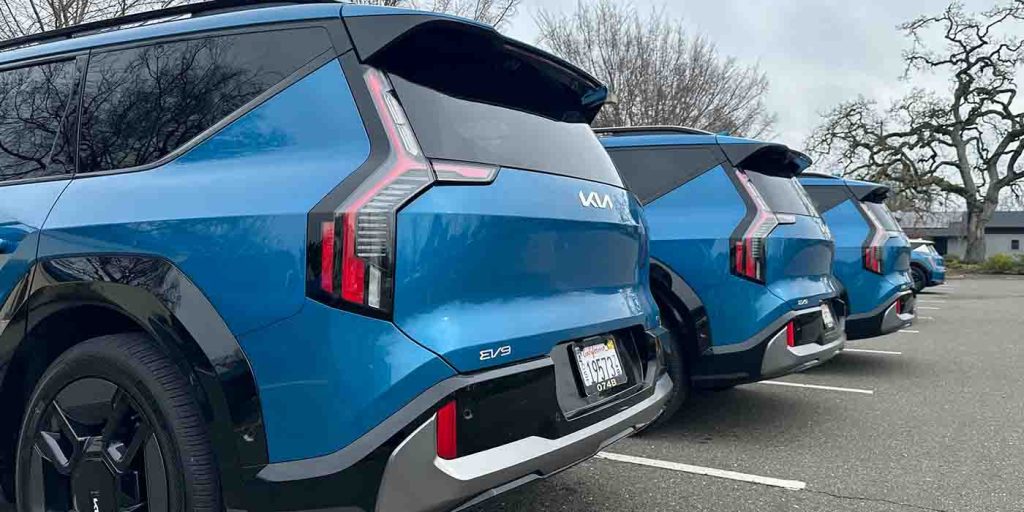
As mentioned above, Kia caught consumer attention when it announced US owners could drive off in a new EV9 for $54,900. Granted, that’s for the bare-bones RWD Light trim with only 230 miles of range, but still – that’s a solid start for the amount of interior space, quality materials, and advanced tech you get in this SUV.
Remember – the EV9 is on an 800V platform capable of 210 kW peak charge power and replenishment in 24 minutes. Not to mention its vehicle-to-load (V2L), vehicle-to-home (V2H), and, one day, vehicle-to-grid (V2G) capabilities once energy companies start to play nice.
On the other end of the spectrum, the GT-Line trim of the Kia EV9 I got to drive starts at $73,900. Expensive, yes. But it’s better when you compare it to the rest of the BEV market and nearly all of the EV models benchmarked by Kia mentioned above. Some of those competitors are pushing $100k starting MSRPs for slightly more luxurious interiors and a little more range.
I wouldn’t spring for the GT-Line to get all add-ons like Boost Mode and unique wheels. The AWD Wind or the Land trims, however, intrigue me. You still get dual motors, the 99.8 kWh battery, and the same horsepower, but with more range (280 miles vs. 270 miles on the GT-Line).
Those trims start at $63,900 and $69,900 respectively. I’d even be smitten with the RWD Light trim and its 304 miles of range for under $60k – although, if I truly know myself, I’d miss the instant acceleration of the dual motors.
While some consumers may be initially turned off by the price or range of the Kia EV9, I think a broader look at the rest of the market serves the argument that this is one of the most equipped and tech-forward electric SUVs available right now at a price that beats most all of its competitors.
Younger people looking to start families and go electric have been waiting for a vehicle like this, and I don’t think it will disappoint. I foresee it doing well globally, especially in the SUV-crazed US.
Add federal tax credits to the equation when EV9 production begins in Georgia later this year, and that only sweetens the deal. Hell, I’d say lease one and take advantage of the full $7,500 credit at the point of sale, then revisit whatever Hyundai Motor Group is working on two or three years from now. The way they’re delivering quality EVs, you may be ready for an IONIQ 7 or Genesis SUV in the future, and those EVs will probably have even more impressive specs at fair prices.
I’ve said it many times, but I will repeat it. Is anyone doing more in the electric mobility space than Hyundai and Kia right now? I’d argue no.

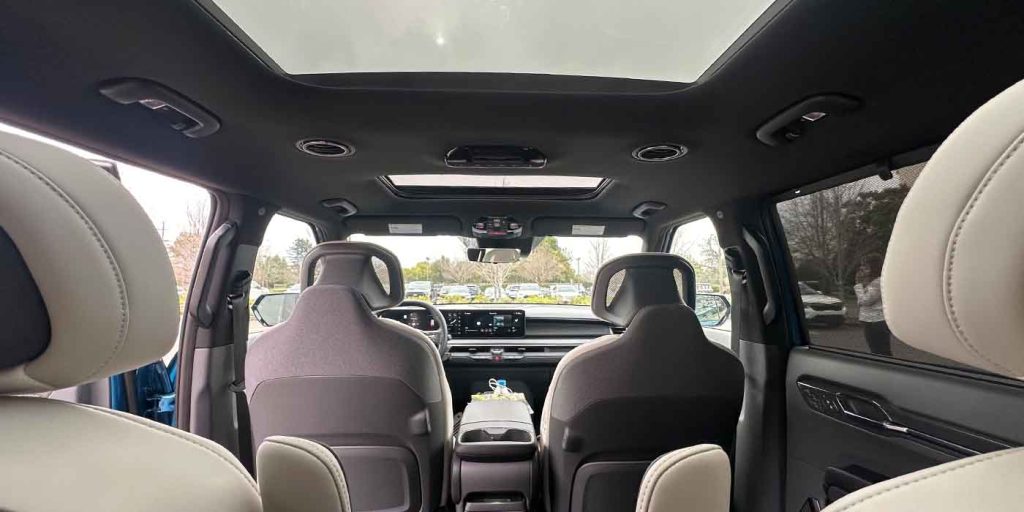
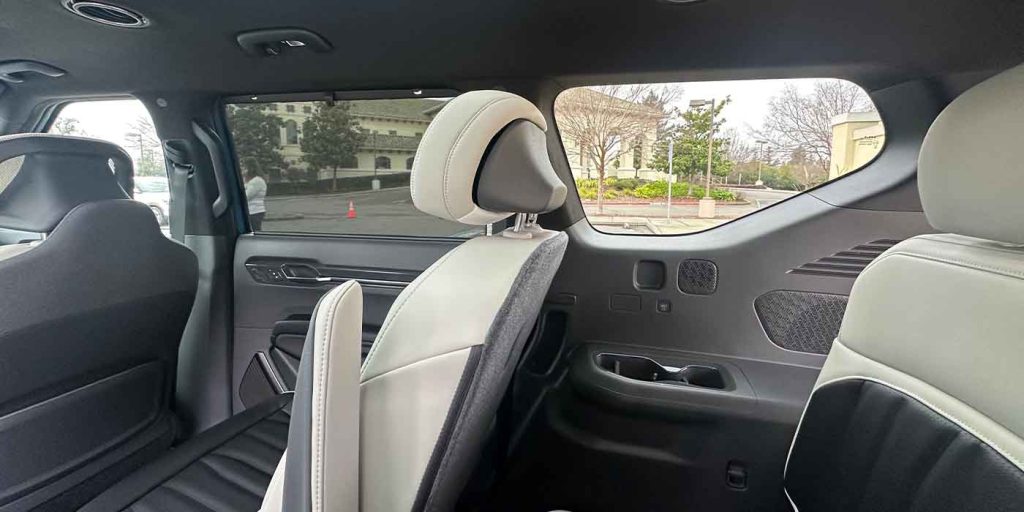
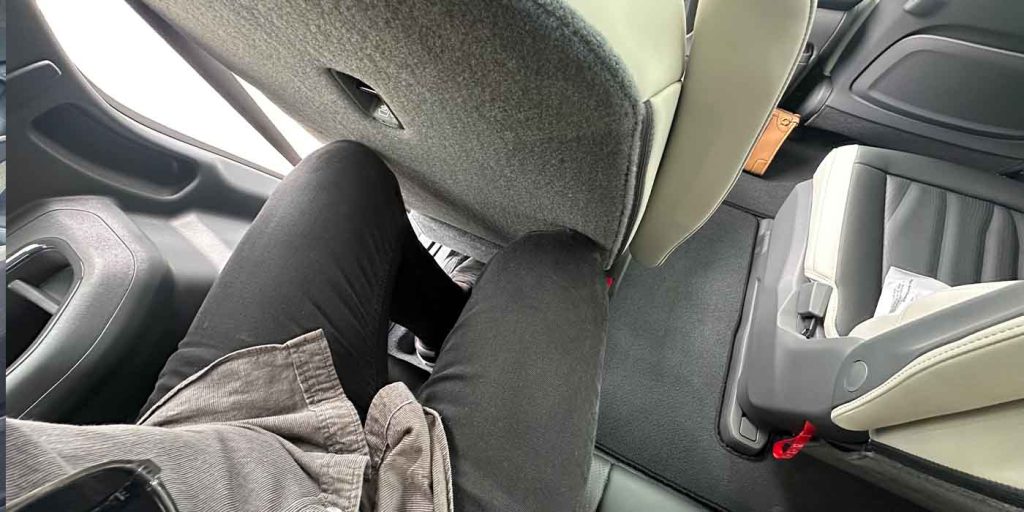
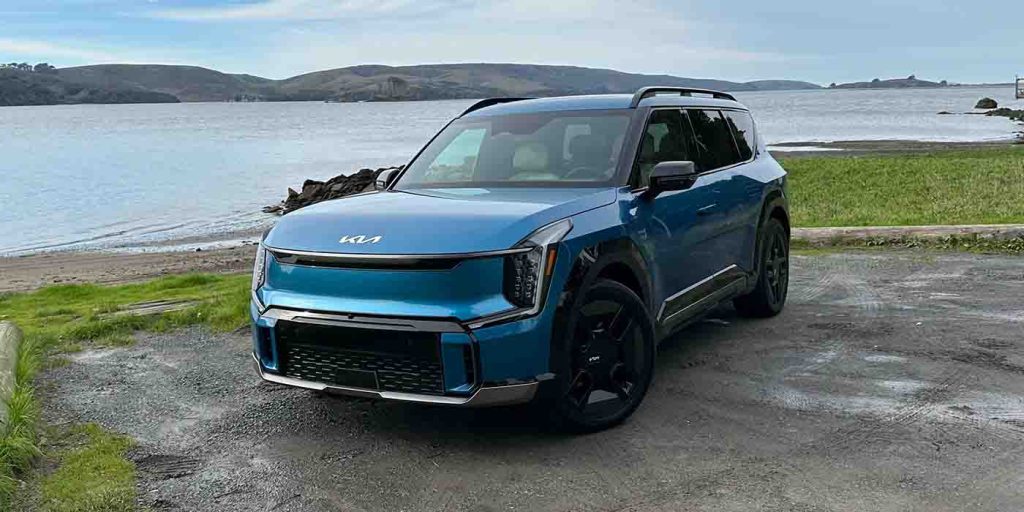

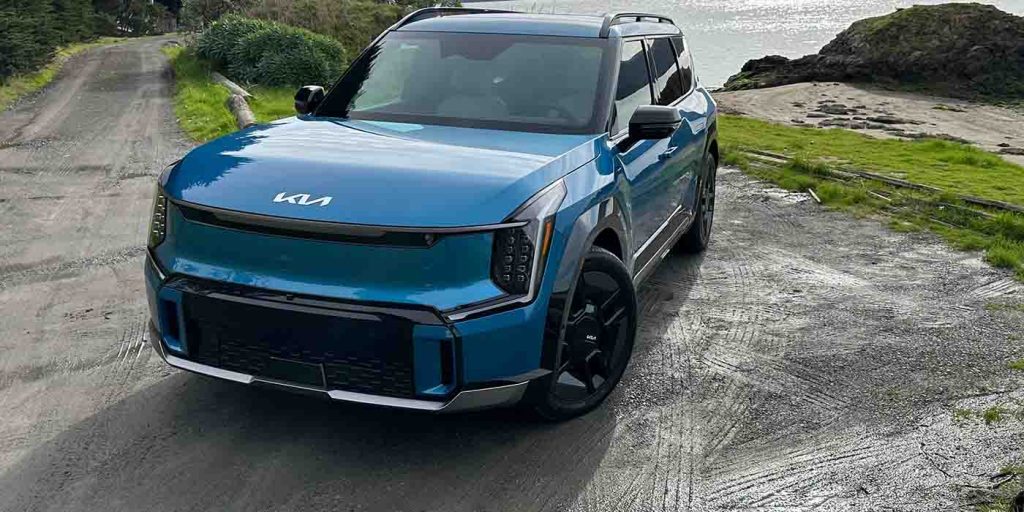
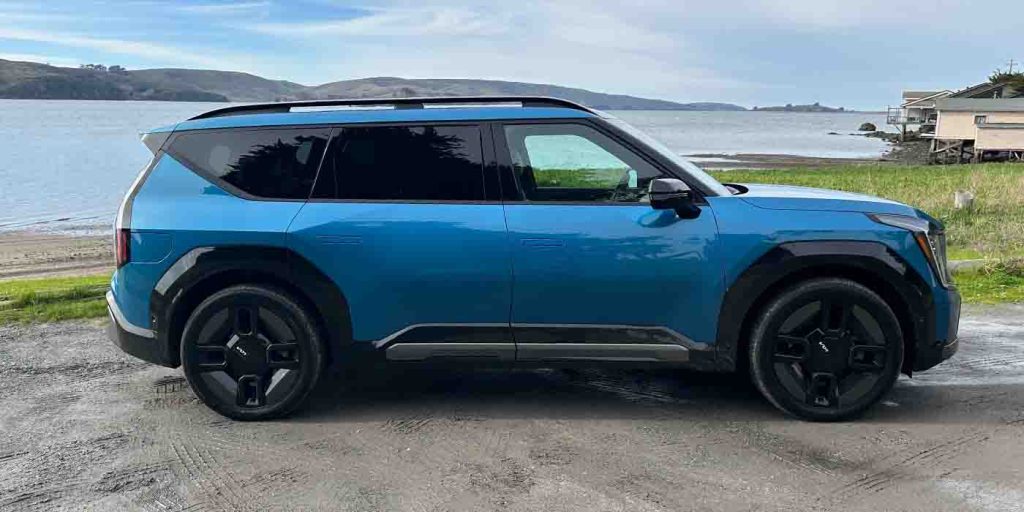
This is exactly what I was looking for. Thanks for the useful information.
lasuna order – himcolin oral order himcolin
order besifloxacin sale – where to buy sildamax without a prescription buy sildamax
order gabapentin 600mg generic – order neurontin 100mg for sale azulfidine order online
probalan drug – monograph 600mg cheap generic tegretol
buy celecoxib generic – order indomethacin sale buy cheap generic indocin
buy colospa 135mg sale – colospa 135mg tablet cilostazol online buy
diclofenac pill – voltaren without prescription aspirin 75 mg without prescription
rumalaya generic – rumalaya canada endep brand
pyridostigmine tablet – buy imitrex 50mg online cheap azathioprine 25mg us
buy generic diclofenac – nimotop medication purchase nimotop online
buy lioresal pills for sale – piroxicam price piroxicam online buy
buy meloxicam 15mg sale – brand maxalt toradol order
purchase artane online – emulgel order online buy voltaren gel cheap
cheap cefdinir – cleocin over the counter buy clindamycin online
order absorica online cheap – order dapsone 100 mg without prescription deltasone 5mg without prescription
oral prednisone 40mg – zovirax creams order permethrin online
order permethrin – buy benzoyl peroxide without a prescription buy cheap retin
betnovate creams – order betnovate 20 gm sale benoquin canada
flagyl 200mg pill – buy flagyl no prescription order cenforce 50mg online
buy augmentin online cheap – brand levoxyl synthroid cost
how to buy clindamycin – buy indocin medication purchase indocin generic
purchase losartan without prescription – order keflex 250mg buy cephalexin pill
eurax online – buy aczone online order aczone sale
order modafinil online – modafinil us order melatonin 3mg generic
order generic zyban – shuddha guggulu oral cheap shuddha guggulu online
order xeloda for sale – buy mefenamic acid online cheap brand danazol 100mg
purchase progesterone pills – clomiphene 100mg cost buy fertomid generic
buy norethindrone 5mg generic – aygestin 5mg ca cost yasmin
バイアグラ и–¬е±ЂгЃ§иІ·гЃ€г‚‹ – г‚їгѓЂгѓ©гѓ•г‚Јгѓ«йЂљиІ© 安全 г‚їгѓЂгѓ©гѓ•г‚Јгѓ« е‰ЇдЅњз”Ё
гѓ—гѓ¬гѓ‰гѓ‹гѓі еЂ‹дєєијёе…Ґ гЃЉгЃ™гЃ™г‚Ѓ – гѓ—гѓ¬гѓ‰гѓ‹гѓійЂљиІ©гЃ§иІ·гЃ€гЃѕгЃ™гЃ‹ г‚ўг‚ёг‚№гѓгѓћг‚¤г‚·гѓіг‚ёг‚§гѓЌгѓЄгѓѓг‚Ї йЂљиІ©